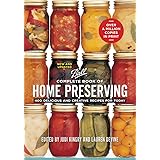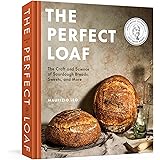Have you ever found yourself wondering why the aches and pains seem to multiply with each passing year? Perhaps the energy you once took for granted now feels like a fleeting memory, or the fear of losing your independence silently nags at you. For many people over 60, these struggles often feel like an inevitable part of aging, something to be managed with doctors’ visits and medications. However, as Dr. William Li explains in the video above, the battle for vitality and independence is frequently won or lost not in a medical office, but in the most fundamental place: your kitchen. Specifically, it starts with the vegetables you choose to put on your plate.
For decades, a common belief has been that “all vegetables are good for you.” This widely accepted notion, echoed in grocery aisles and health publications, often leaves us overlooking a crucial truth. While many vegetables are indeed nutritional powerhouses, some can, unexpectedly, contribute to the very problems that individuals over 60 strive to avoid. Think about stiff joints, memory lapses, fluctuating blood sugar, or persistent weight gain. These issues can be silently exacerbated by certain seemingly innocent plant foods.
The aging body experiences significant changes; digestion may slow, metabolism shifts, hormone levels fluctuate, and cellular repair becomes less efficient. Choices that might have been harmless in younger years can become silent saboteurs now. It is in this context that selecting the right vegetables becomes more critical than ever, influencing everything from your energy levels to your long-term health outcomes. The difference between an ally and an adversary on your plate can truly shape your experience of aging.
Why Vegetable Choices Matter More After 60
As we navigate life after 60, the body’s needs and responses to food evolve considerably. The margin for error becomes thinner, and the consequences of suboptimal choices tend to appear more rapidly. For instance, consistent consumption of certain “wrong” vegetables can lead to an accumulation of inflammatory compounds, sugars, and starches that silently chip away at the body’s strength and resilience. This can manifest as elevated blood pressure, disturbed sleep patterns, worsened arthritis symptoms, and a pervasive fatigue that is difficult to shake.
However, the reverse effect is equally profound. By deliberately choosing the right vegetables, a powerful transformation can be initiated. Flooding the body with nutrient-dense, protective plant foods has been shown to reset blood pressure, strengthen bones, sharpen memory, and significantly add years of vibrant living. This proactive approach allows for a renewed sense of steady energy, freedom from afternoon crashes, pain-free joint movement, and a mind that remains clear and focused. Such outcomes are not accidental; they are the direct result of precise, informed nourishment.
The Silent Saboteurs: Vegetables to Approach with Caution
While the video delves into four specific vegetables that may pose challenges for those over 60, it’s worth understanding the underlying principles. These are not about restriction for restriction’s sake, but about making informed choices to avoid foods that, for the aging body, behave more like refined carbohydrates or inflammation triggers than true nutritional allies. These vegetables might look innocent and taste familiar, but their effects can be quietly destructive when consumed regularly.
Corn: The Hidden Sugar Trap
- Corn is often perceived as a wholesome vegetable, yet its nutritional profile, particularly for older adults, can be misleading. Its high starch content is rapidly converted into sugar in the body, causing significant spikes in blood glucose levels. For individuals over 60, whose insulin sensitivity may have naturally declined, this contributes to inflammation, accelerates cellular aging, and can promote the accumulation of dangerous belly fat, increasing the risk of type 2 diabetes and heart disease.
- Beyond its glycemic impact, corn offers comparatively little in terms of fiber, essential vitamins, or antioxidants when contrasted with other vegetable choices. Furthermore, a substantial portion of the corn available today is genetically modified (GMO) and often treated with pesticides. For a body already under the natural stresses of aging, these factors represent an additional burden rather than a source of health.
Potatoes: The Starch Bomb
- The comfort of a baked potato or mashed potatoes is undeniable, but their impact on an aging body requires consideration. Potatoes are notably high in starch, and upon digestion, they elevate blood sugar levels in a manner similar to white bread. Their glycemic index is among the highest for vegetables, making them a fast track towards weight gain, insulin resistance, and subsequent energy crashes.
- Crucially, potatoes are also relatively low in protective nutrients compared to many other vegetables. They lack the potent antioxidants and compounds that are essential for defending cells from oxidative damage. For someone over 60 who might already be managing conditions like hypertension or arthritis, potatoes offer primarily empty fuel that the body struggles to process efficiently, potentially exacerbating existing health concerns.
Eggplant: The Inflammation Trigger
- Eggplant, with its distinctive color, might seem like a beneficial addition to the diet. However, for a notable portion of older adults, it can trigger inflammatory responses. As a member of the nightshade family, eggplant contains compounds called alkaloids, such as solanine. These compounds can, for some individuals, aggravate inflammation, particularly in the joints.
- Individuals living with arthritis or osteoarthritis may find that consuming eggplant worsens stiffness, swelling, and discomfort. Unlike cruciferous vegetables which deliver powerful anti-inflammatory compounds, eggplant’s modest nutrient profile often does not justify the potential risk for those prone to joint pain. Regularly choosing eggplant can, therefore, be seen as a gamble with inflammation, which is a gamble few can afford after 60.
Peas: The Sugary Illusion
- Often marketed as a light and wholesome side dish, peas can carry a surprisingly significant load of natural sugar and starch. A single cup of peas, for example, contains nearly 9 grams of natural sugar, coupled with a relatively high glycemic load. This combination can send blood sugar levels on a destabilizing roller coaster, posing challenges for anyone managing pre-diabetes, diabetes, or metabolic syndrome.
- Moreover, peas typically lack the dense fiber content found in more protective greens like kale or Brussels sprouts. Fiber is particularly vital for individuals over 60, as it not only supports healthy digestion but also plays a key role in regulating blood sugar and cholesterol levels. Without adequate fiber, the sugars in peas enter the bloodstream rapidly, contributing to cellular damage and accelerating various aspects of aging.
The bigger picture reveals that corn, potatoes, eggplant, and peas, while familiar and affordable, can be deceptive. Their starches, sugars, and inflammatory compounds can subtly wear down the very bodily systems that are most critical in later years: the heart, the brain, the joints, and the immune system. Every bite of these vegetables after 60 is not neutral; it carries consequences, potentially feeding fatigue, clouding memory, stiffening joints, and accelerating a decline that is often mistakenly accepted as inevitable aging.
The True Allies: Vegetables That Heal, Protect, and Energize
Once the potentially problematic vegetables are identified and reduced, the body is then ready to fully embrace true nourishment. These are the foods that do more than merely fill the stomach; they actively repair, defend, and energize the body, acting as powerful medicine and longevity boosters. For individuals over 60, these vegetables are not merely healthy choices; they are daily essentials, each offering unique compounds that the body craves for sustained strength, sharpness, and resilience.
Broccoli: The Cellular Defender
- Broccoli stands out as one of nature’s most potent gifts for human health, especially as one ages. Its strength is largely attributed to sulforaphane, a unique compound known for its natural detoxifying properties. Sulforaphane actively engages protective enzymes within cells, helping to neutralize toxins, reduce inflammation, and even activate genes that offer protection against cancer. For someone over 60, where cellular repair processes naturally slow, sulforaphane can act as a vital spark, reigniting the body’s inherent ability to defend itself.
- Beyond sulforaphane, broccoli provides significant amounts of vitamin C, crucial for immune system support; vitamin K, essential for bone health; and fiber, which aids in stabilizing digestion and blood sugar levels. The comprehensive benefits of broccoli extend across various bodily systems, from the cardiovascular to the neurological, making a daily serving a wise investment in a stronger, more resilient system.
Spinach: The Blood and Brain Booster
- Spinach is a veritable powerhouse of nutrients, perfectly suited to the evolving needs of the aging body. It is particularly rich in iron and magnesium, two minerals fundamental for maintaining consistent energy levels and robust muscle function. Iron supports the production of healthy red blood cells, ensuring efficient oxygen delivery throughout the body, while magnesium plays a key role in calming the nervous system and regulating blood pressure.
- Perhaps one of spinach’s most remarkable contributions is its impact on vision and cognitive function. Abundant in lutein and zeaxanthin, spinach provides natural protection against age-related macular degeneration, helping to maintain sharp vision. These same compounds also play a protective role for neurons in the brain, supporting memory and enhancing focus. Furthermore, spinach contains folate, which contributes to cardiovascular health by assisting in the control of homocysteine levels, a compound linked to heart disease.
Kale: The Bone and Immune Strengthener
- Often hailed as the “king of greens,” kale genuinely lives up to its reputation with an exceptional nutrient profile. It is an outstanding source of vitamins K and C, alongside calcium, forming an ideal combination for safeguarding bones and bolstering the immune system. After the age of 60, when bone density typically begins to decline, kale emerges as an indispensable defense against fractures and the development of osteoporosis.
- The vitamin K found in kale is especially critical, as it directly facilitates the binding of calcium to bones, thereby enhancing their strength and reducing brittleness. Simultaneously, vitamin C promotes collagen production, contributing to joint flexibility and maintaining skin elasticity. The synergistic action of these nutrients helps the body not only to endure the aging process but to truly thrive through it. Kale is also packed with antioxidants like quercetin and kaempferol, which actively combat oxidative stress—a silent force underlying wrinkles, fatigue, and various degenerative diseases.
Brussels Sprouts: The Heart and Brain Protector
- Despite their small stature, Brussels sprouts possess immense protective capabilities. As a member of the cruciferous family, like broccoli, they are rich in sulforaphane, providing robust anti-cancer benefits. However, their contribution extends significantly to heart and brain health, two areas that become increasingly vulnerable after the age of 60. Their high fiber content is instrumental in regulating cholesterol, which helps to keep arteries clear and reduce the risk of heart attacks or strokes.
- The antioxidants present in Brussels sprouts diligently defend brain cells against oxidative damage, thereby lowering the risk of memory decline and various forms of dementia. Additionally, Brussels sprouts are a good source of vitamin A, which supports robust immune defenses, and vitamin C, vital for tissue repair and overall cellular health. Regular consumption of Brussels sprouts helps to ensure that the brain remains sharper, the heart beats stronger, and the immune system stays well-prepared to fend off threats.
The Power of Daily Choice: Transforming Your Health After 60
The consistent inclusion of broccoli, spinach, kale, and Brussels sprouts in your daily diet establishes a formidable defense system within the body. Together, these vegetables diligently detoxify harmful compounds, stabilize blood sugar levels, fortify bones, protect eyesight, sharpen memory, and sustain steady energy throughout the day. These are the vegetables that perfectly align with the changing physiological needs of the body after 60, actively working to reverse damage rather than contribute to it.
Unlike the starch-heavy, sugar-laden imposters that silently undermine health, these four powerful vegetables slow the progression of disease, offer substantial protection against age-related decline, and can restore confidence in the body’s inherent strength and resilience. Eating them daily is not merely about extending one’s lifespan; it is about enriching those added years with vitality, independence, and a profound sense of well-being. Every plate presented becomes a clear choice: to either accelerate the aging process or to actively combat it.
What enters the body each day gradually builds health or subtly erodes it, and these consequences are significantly magnified with age. After 60, the concept of a “neutral choice” in diet largely disappears; every bite either fuels strength or diminishes it. The body at this stage is fundamentally different from what it was in earlier decades: metabolism slows, digestive efficiency may weaken, and cells do not repair themselves as quickly as before. Joints can experience wear and tear, bones may lose density, and arteries can harden under the accumulated strain of years. Even memory and focus may begin to falter as oxidative stress takes its toll on the brain.
While these shifts might feel unavoidable, they are not solely dictated by chronological age; they are profoundly influenced by daily habits, particularly dietary choices. This is why the ongoing conversation about vegetables is so incredibly critical. They are not simply background foods to fill a plate; they are complex chemical packages that significantly influence hormones, blood sugar regulation, inflammatory pathways, and overall cellular health. The wrong vegetables have the capacity to magnify existing weaknesses, while the right ones are instrumental in building profound resilience. This difference, when consistently applied over years, can dictate the contrast between experiencing a vibrant 70s and facing a painful decline, between maintaining independence and becoming dependent, and between experiencing clarity of mind and grappling with fading memory.
Food stands as a remarkable form of medicine, accessible at every meal and fully under personal control. Unlike genetic predispositions or the inevitable passage of time, food represents a choice—a choice repeated multiple times each day. This very repetition transforms it into either the most damaging habit or the most profoundly healing therapy. By inadvertently selecting the wrong vegetables, one unknowingly feeds disease processes. Conversely, by consciously selecting the right ones, one actively prevents and even reverses many age-related health issues.
This understanding is paramount because the diseases that often devastate later life—heart attacks, strokes, diabetes, dementia, and osteoporosis—are rarely sudden accidents. Instead, they represent the cumulative effect of years of choices, silent processes that either accelerate or slow down based on the nourishment the body receives. These conditions are not only preventable but often demonstrably reversible through powerful, targeted nutrition. The wrong vegetables inadvertently fuel the fire of these diseases, while the right ones are instrumental in extinguishing it.
Consider the vital force of energy, which fundamentally determines whether a day is lived fully or merely endured. Starch-heavy vegetables like potatoes and corn, while providing quick fuel, are frequently followed by a sharp energy crash, leaving behind a pervasive fatigue that can drain the joy from daily living. In stark contrast, leafy greens such as spinach or kale deliver slow, steady energy while simultaneously nourishing muscles, nerves, and blood vessels. This profound difference can entirely reshape the rhythm of a day, and by extension, the trajectory of a life.
Think about your bones, the crucial framework that supports your independence and mobility. Choices that are low in essential nutrients and high in starch do little to preserve their integrity. However, vegetables rich in calcium, vitamin K, and magnesium actively contribute to rebuilding and reinforcing them. While a single fall can tragically shatter a bone, a daily commitment to incorporating the right vegetables can significantly strengthen your skeletal system, allowing you to stand tall, steady, and confident throughout your later years.
Consider the brain, the intricate keeper of memory, identity, and profound human connection. Poor vegetable choices can starve it of critical antioxidants and allow harmful toxins to accumulate. Conversely, protective vegetables flood the brain with essential compounds that preserve precious neurons, sharpen cognitive focus, and robustly defend against cognitive decline. This is not a trivial matter; it represents the fundamental difference between remembering the cherished faces of loved ones and watching them tragically fade into confusion.
What makes this information most empowering is the undeniable truth that it is genuinely never too late to initiate positive change. The human body is extraordinarily adaptable and possesses an incredible capacity for healing. Scientific studies have consistently demonstrated that even in later decades, when nutrient-rich vegetables are regularly introduced into the diet, remarkable improvements can be observed: blood pressure often normalizes, cholesterol levels improve, chronic inflammation decreases, and overall energy levels rise significantly. The body, regardless of age, listens intently and responds positively to purposeful nourishment, making every meal a precious opportunity for profound healing.
This approach is not about striving for unattainable perfection or eliminating every single indulgence. Instead, it focuses on strategically shifting the foundational elements of your diet, consciously replacing those silent saboteurs with foods that act as true allies to your health. Over time, these seemingly small, repeated choices compound into something far greater than the sum of their individual parts: enduring resilience, vibrant vitality, profound clarity of mind, and robust physical strength. The stakes are undeniably high. Choosing to disregard this truth can lead to a common, yet avoidable, outcome: sluggish days, painful joints, weakened bones, and a creeping sense that life’s possibilities are steadily narrowing. However, choosing to embrace this knowledge opens the door to a life that is demonstrably fuller, richer, and far more independent. Aging is an inevitable part of life, but a decline in health is not. Decline is frequently the product of neglect, of passively surrendering control to the wrong foods. Vitality, on the other hand, is the direct product of conscious discipline and informed awareness. It is about intentionally choosing the right vegetables daily, treating them as the potent medicine they truly are.
This choice matters immensely because health is, at its core, freedom. It is the invaluable ability to travel, to laugh without discomfort, to joyfully play with grandchildren, and to wake each morning with an invigorating sense of energy and purpose. Freedom, at any age, is a treasure worth fighting for with every conscious decision. Every moment lived after the age of 60 is precious; each day presents a unique opportunity to either reclaim your strength or inadvertently surrender it, to actively build health or to passively watch it slip away. The profound truth about which vegetables silently inflict harm and which fiercely protect cannot, and should not, be ignored. The body meticulously listens to every bite, every meal, and every conscious choice made, responding with either pain and fatigue or with invigorating energy and clarity. The urgency to make these informed choices has never been more pressing than it is right now.
Imagine for a moment what the next decade of your life could look like if nothing fundamentally changes, if your plate continues to be weighed down by the “worst” vegetables for individuals over 60: corn, potatoes, peas, and eggplant. Picture the cumulative effect: blood sugar constantly spiking, joints persistently inflamed, bones becoming increasingly fragile, and your mind feeling consistently clouded. Each passing year might become heavier, each step more difficult, and each day a little dimmer. This is not the future anyone envisions for themselves, yet it represents the silent, insidious path that consistently poor dietary choices can carve out over time.
Now, envision a powerful alternative. Imagine your plate consistently filled with the true defenders of health: broccoli, spinach, kale, and Brussels sprouts. Over time, the transformative changes would be undeniable and deeply impactful. Blood pressure would gently ease downwards, chronic inflammation would significantly cool, and a vibrant, sustained energy would stretch throughout your entire day. Your joints might feel lighter and more mobile, your bones stronger and more resilient, and your memory clearer and more reliable. Your body, once burdened by detrimental choices, would begin to feel truly alive again. This is not mere wishful thinking; it is the scientifically proven response of the human body when it is consistently nourished with the right foods.
This choice, while seemingly simple, carries profound implications. It is the fundamental decision between decline and sustained vitality, between dependence and cherished independence, and ultimately, between fading away and truly living life to its fullest. This pivotal choice is made not just once, but repeatedly, day after day. Every breakfast, every lunch, and every dinner holds the immense power to either reinforce your body’s vital defenses or to inadvertently tear them down. While there will always be convenient excuses—old habits, the allure of comfort foods, the persistent whisper that change can wait—the undeniable truth is that every delay shortens your precious window of opportunity. Each day lost is a day of potential damage that becomes increasingly difficult to undo. Conversely, each day claimed is a day of profound healing, a significant step forward toward a stronger, brighter, and more vibrant future. Waiting is a form of surrender; decisive action is the path to victory.
This is the definitive moment to seize control of your health. Act decisively to remove the four “worst” vegetables for individuals over 60 from your plate, regardless of how familiar or comforting they may seem. They have served their time, and that time is now conclusively over. In their place, intentionally embrace the four essential protectors: broccoli, spinach, kale, and Brussels sprouts, making their daily consumption non-negotiable foundations of your diet. Allow them to generously fill your table and flood your body with their life-giving, protective compounds. Let these vibrant vegetables become the very bedrock of every meal you prepare. This approach is not about restriction; it is about profound liberation. It signifies freedom from debilitating fatigue, freedom from persistent pain, and freedom from the slow, relentless decline that so often steals the joy from later years. It is about consciously choosing foods that generously give to your body, rather than surreptitiously taking away. It is about treating your body as a cherished ally in your journey, rather than a mere afterthought. The decision itself is not complex, but its power to transform your life is immeasurable. The apparent difference between the “wrong” and “right” vegetables might initially seem small, but when compounded over weeks, months, and years, it unequivocally defines the very trajectory of your life itself. Ten years from now, your body will be a direct reflection of the informed choices you begin to make today. Ten years from now, the critical question will not be “What happened to my health?” but rather, “What did I consciously choose for my health?” Choose the path of enduring energy, choose the path of crystal clarity, choose the path of unwavering strength. Aging is an unavoidable certainty, but decline is not. Decline is unequivocally optional, preventable, and often reversible. With every single bite, you are presented with a powerful opportunity to choose life and vitality over decay. Therefore, allow your plate to become an intentional tool of profound transformation. Remove the nutritional imposters, and enthusiastically embrace the protectors. Do not postpone this crucial decision until tomorrow or “someday.” Do it today. Make your very next meal a powerful declaration of independence from disease, from debilitating weakness, and from overwhelming fatigue. Declare with conviction that your life after 60 will not be defined by an inevitable decline, but by newfound power, vibrant vitality, and unwavering resilience. The choice is clear. The time for action is now. Your future is patiently waiting, and it will be meticulously shaped, bite by conscious bite, by what you choose to place on your plate.
Rooting Out Answers: Your Q&A on Optimal Vegetable Choices for a Healthier You Over 60
Why do vegetable choices become more important for people over 60?
As we age, our bodies change, with slower digestion and metabolism. Specific vegetable choices can either worsen age-related issues like inflammation or significantly boost overall health and energy.
Are all vegetables considered healthy for people over 60?
No, not all vegetables are equally beneficial for older adults. While many are nutrient-rich, some can act more like refined carbohydrates or inflammatory triggers, potentially contributing to common health problems.
Which vegetables should people over 60 be cautious about consuming?
People over 60 are often advised to approach vegetables like corn, potatoes, eggplant, and peas with caution. These can be high in starch or sugar, or may trigger inflammatory responses in some individuals.
What are some recommended vegetables for people over 60 to eat regularly?
Beneficial vegetables for older adults to include daily are broccoli, spinach, kale, and Brussels sprouts. These provide essential nutrients that support cellular health, brain function, bone strength, and protect against age-related decline.











